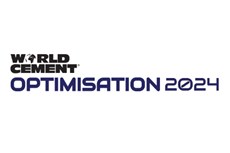Everything you need to know about explosion safety
Published by Lucy Stewardson,
Editorial Assistant
World Cement,
In three parts, this article by Rembe GmbH will give comprehensive information about the basics of explosion safety and the available protective systems for this purpose.
Assessing the explosion hazard
Whether it is screens, dryers, mills, or filters in the food, chemical, or plastics industry, whenever a production process generates dust, the relevant plant is potentially at risk of a dust explosion. This means that preventative and protective measures are needed in order to reduce such a hazard.
To decide whether and to what extent precautions are required, a systematic risk assessment should first be conducted. The first stage is to gauge the probability that an explosive atmosphere might be created and whether there are any potential sources of ignition. Next, the effect that an explosion might have should be classified.
After this, both assessments can be merged into a matrix. The resulting indicators show whether and to what extent the plant or parts of it need to be protected. A green box means that no precautions are necessary. A red box, on the other hand, indicates that precautions are urgent. The higher the numerical rating, the more extensive the precautions should be.
How do explosions arise?
An explosion is based on the availability of oxygen from the air, a source of ignition, and a combustible substance. In the event of a dust explosion, the distribution of dust is another factor.
However, not every dust-air mixture is explosive. What matters is the mixing ratio. Specific explosion limits have been identified for every common type of dust and within those limits an explosive mixing ratio can be expected.
The lower explosion limit is the minimum concentration required to create an explosive atmosphere. The upper explosion limit specifies the point from which the mix is too rich, so that the atmosphere is no longer explosive.
There also needs to be an effective source of ignition. Common sources of ignition are hot surfaces, electric sparks, and glowing embers.
Explosion safety precautions
Depending on the results of the hazard and risk analysis, a number of proven precautions need to be taken. These are divided into explosion prevention and explosion protection. Preventive precautions are designed to prevent an explosive atmosphere and, therefore, to reduce the probability of an explosion. Wherever this is possible, combustible substances are replaced by substances that cannot produce an explosive mix. In addition, it is possible to overlay the substance-air mix with inert gases. This has the effect of lowering the content of oxygen from the air, so that no explosion can occur.
Additionally, preventive precautions concentrate on the avoidance of effective sources of ignition. This includes, for instance, the use of suitable equipment, protecting the product flow from impurities and monitoring the earthing of the system, with a view to preventing electronic discharge.
Protective precautions involve reducing the impact of a possible explosion to a more moderate level, so that the resulting damage is less severe. This includes conventional venting through the use of explosion vents, flameless venting, explosion isolation, and explosion suppression. This kind of explosion safety is a vital necessity in virtually all plants, for the following reasons:
- It is in the nature of the relevant processes that there can almost never be any absolute or complete avoidance of effective sources of ignition.
- Inerting tends to be too expensive and/or not possible due to the nature of the processes involved. Other preventive precautions may be helpful in parts, but cannot usually eliminate the risk of an explosion completely.
As protective precautions are of such high relevance, part two of this article will briefly outline the most common safety systems.
REMBE provides customers in all industries with safety systems for their plants and equipment.
Read the article online at: https://www.worldcement.com/special-reports/27122018/everything-you-need-to-know-about-explosion-safety/
You might also like
Rohrdorfer starts ethylene production from carbon dioxide
Following a test phase, production is to be scaled up to an industrial scale, thereby establishing a seamless CO2 circular economy.


